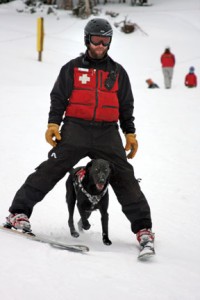Island of Grass By Ellen Wohl
Published in 2009 by University Press of Colorado
ISBN 978-0-87081-963-6
$22.95, paperback; xiv+224 pages
Reviewed by Virginia McConnell Simmons
At first glance, a book about the grasslands of the eastern third of Colorado might seem to hold little interest for readers in Central Colorado. This volume warrants a less hasty opinion, however, for it offers a wealth of information for anyone interested in natural history.
The eastern portion of Colorado was once a sea of grass, and, since almost all of it is now gone, most of today’s readers who never saw a shortgrass prairie need to begin with a description of its characteristics. The author Ellen Wohl, a professor of geology at Colorado State University, ably gets us started with authoritative information about the geology, archaeology, climate, and history of the region. She also gives us a good understanding of the original shortgrass, mixed-grass, sandhill, and tallgrass prairies of North America. Rare as they have become, some of us have only viewed them with little appreciation, as we hurry through, perhaps on hunting trips or bird-watching sorties to see unique species that we seldom can find elsewhere.
Wohl then devotes the major portion of her book to one small island of pristine grassland, representing the shortgrass prairie that covered most of eastern Colorado and adjacent areas to the north and south prior to settlement and agriculture. Her site is the Fromme Prairie, a 249-acre preserve of open space near Fort Collins. Small though it may be, it is an outstanding example of the shortgrass prairie that is restricted in Colorado now to only a few locations, such as the Pawnee and Comanche National Grasslands.
As she leads the reader through the preserve season by season, she reveals an astonishing diversity of life that exists in this ecosystem. In fact, one can easily picture Wohl herself, a docent, or a classroom teacher guiding a group of children, college students, or local adults, who pause here and there to discuss whatever captures their attention in this diverse landscape.
This book is not your usual guide to grasses, wildflowers, mammals, birds, or insects. Some of Wohl’s information, like the life history of Black-tailed Prairie Dog, is written in considerable detail and depth, whereas others, such as Pronghorn Antelope, receive rather cursory treatment. Many subjects in this wealth of information will be familiar to Central Coloradans, so this book should be a welcome addition to many bookshelves here, whether or not the owner ever gets to Fromme Prairie itself.
Although the text disconcertingly skips back and forth among topics sometimes, just as a visitor’s attention might be interrupted by unexpectedly seeing something different, an excellent index will guide readers to their own particular interests, whether they are coyotes, hawks, or ricegrass. Her extensive bibliography is divided into specific subjects, a useful device. Numerous black and white photographs accompany the text, and lists of animals and plants at Fromme Prairie are provided. All in all, this book is a keeper.


